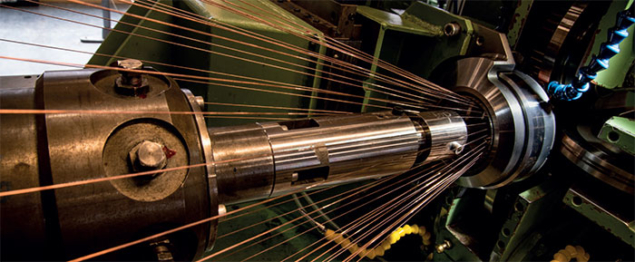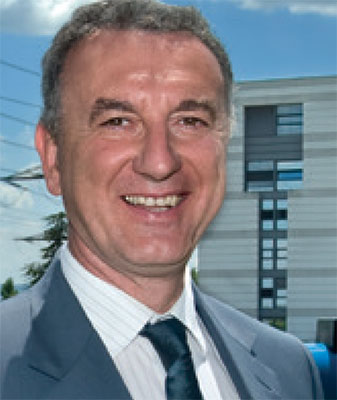
Image credit: M Brice/CERN.
This month more than 1000 scientists and engineers are gathering in Geneva to attend the biennial European Conference on Applied Superconductivity (EUCAS 2017). This international event covers all aspects of the field, from electronics and large-scale devices to basic superconducting materials and cables. The organisation has been assigned to CERN, home to the largest superconducting system in operation (the Large Hadron Collider, LHC) and where next-generation superconductors are being developed for the high-luminosity LHC upgrade (HL-LHC) and Future Circular Collider (FCC) projects.
When Karl H Onnes discovered superconductivity in 1911, Ernest Rutherford was just publishing his famous paper unveiling the structure of the atom. But superconductivity and nuclear physics, both with their own harvests of Nobel prizes, were unconnected for many years. Accelerators have brought the fields together, as this issue of CERN Courier demonstrates.
The constant evolution of high-voltage radio-frequency (RF) cavities and powerful magnets to accelerate and guide particles around accelerators drove a transformation of our understanding of fundamental physics. But by the 1970s, the limit of RF power and magnetic-field strength had nearly been reached and gigantism seemed the only option to reach higher energies. In the meantime, a few practical superconductors had become available: niobium-zirconium alloy, niobium-tin compound (Nb3Sn) and niobium-titanium alloy (Nb-Ti). Its reliability in processing and uniformity of production made Nb-Ti the superconductor of choice for all projects.
The first large application of Nb-Ti was for high-energy physics, driving the bubble-chamber solenoids for Argonne National Laboratory in the US (see “Unique magnets”). But it was accelerators, even more than detectors or fusion applications, that drove the development of technical superconductors. Following the birth of the modern Nb-Ti superconductor in 1968, rapid R&D took place for large high-energy physics projects such as the proposed but never born Superconducting SPS at CERN, the ill-fated Isabelle/CBA collider at BNL and the Tevatron at Fermilab (see “Powering the field forwards”). By the end of the 1980s, superconductors had to be produced on industrial scales, as did the niobium RF accelerating cavities (see “Souped up RF”) for LEPII and other projects. MRI, based on 0.5–3 T superconducting magnets, also took off at that time, today dominating the market with around 3000 items built per year.

The LHC is the summit of 30 years of improvement in Nb-Ti-based conductors. Its 8.3 T dipole fields are generated by 10 km-long, 1 mm-diameter wires containing 6000 well-separated Nb-Ti filaments, each 6 μm thick and protected by a thin Nb barrier, all embedded in pure copper and then coated with a film of oxidised tin-silver alloy. The LHC contains 1200 tonnes of this material, made by six companies worldwide, and five years ago it powered the LHC to produce the Higgs boson.
But the story is not finished. The increased collision rate of the HL-LHC requires us to go beyond the 10 T wall and, despite its brittleness, we are now able to exploit the superior intrinsic properties of Nb3Sn to reach 11 T in a dipole and almost 12 T peak field in a quadrupole. Wire developed for the LHC upgrade is also being used for high-resolution NMR spectroscopy and advanced proton therapy, and Nb3Sn is being used in vast quantities for the ITER fusion project (see “ITER’s massive magnets enter production”). Testing the Nb3Sn technology for the HL-LHC is also critical for the next jump in energy: 100 TeV, as envisaged by the CERN-coordinated FCC study. This requires a dipole field of 16 T, pushing Nb3Sn beyond its present limits, but the superconducting industry has taken up the challenge. Training young researchers will further boost this technology – for example, via the CERN-coordinated EASITrain network on advanced superconductivity for PhD students, due to begin in October this year (see “Get on board with EASITtrain”).
The virtuous spiral between high-energy physics and superconductivity is never ending (see “Superconductors and particle physics entwined”), with pioneering research also taking place at CERN to test the practicalities of high-temperature superconductors (see “Taming high-temperature superconductivity”) based on yttrium or iron. This may lead us to dream about a 20–25 T dipole magnet – an immense challenge that will not only give us access to unconquered lands of particle physics but expand the use of superconductors in medicine, energy and other areas of our daily lives.





